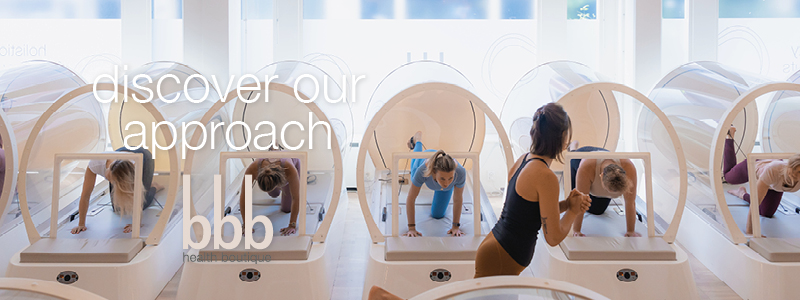pregnancy and training
train safe during pregancyNavigating the realm of pregnancy and training requires a tailored approach to ensure the safety and well-being of both you and your growing baby. Our specialized programs are designed for each stage of pregnancy, with adjustments like lowering the cabin heat or turning it off. No capes needed – you can still participate in classes, but with a personalized program. If there are specific exercises not suitable for your workout, our instructors will guide you, allowing you to seamlessly integrate alternatives from your individualized program.
A lot changes during pregnancy. First of all, of course, you get a bigger belly. The center of gravity changes and the weight increases. During pregnancy you also produce more relaxin. This can lead to more flexibele ligaments. The blood circulation also changes, you have a larger blood volume and a faster resting heart rate. More blood vessels are formed and there is a faster breathing. This also makes you tired more quickly during pregnancy.
From 12 weeks no straight abdominal muscles but oblique and transverse abdominal muscles
After 12 weeks we avoid training your straight abs in isolation, such as with sit ups. Between all abdominal muscles is a long line, the linea alba. The linea alba plays an important role in diastasis. Because you produce relaxin during pregnancy and the ligaments become more lax, the linea alba will also do the same. This causes it to move more apart, we call this diastasis. This is a desirable process to gain more space for the uterus. By tightening the straight abdominal muscles, you pull extra on the linea alba, which gives you even more space and can cause an abdominal hernia. That is why you should not train the straight abdominal muscles during pregnancy. The oblique and transverse abdominal muscles pull the linea alba in a good way, which give firmness. So you really want to train this one.
Watch out for a tute
Keep a close eye on your abdomen while exercising. When a roof forms on the abdomen, the abdominal pressure is too high. The linea alba is then stretched and therefore weaker and loses its function (holding the organs inside and firmness of the basic stabilization). It is then wise to adjust the exercise or not to do it anymore with a tute. Excessive abdominal pressure can lead to various complaints, such as lower back and pelvic complaints, pelvic floor complaints, constipation, pain around the navel or umbilical hernia, prolapse and difficulty breathing completely.
After pregnancy (approximately up to 3-6 months)
In any case, only train after 6 weeks, in connection with wound recovery. By training the straight abdominal muscles too quickly, you slow down the recovery from, for example, a diastasis. By training the oblique and transverse abdominal muscles, you can give more strength to the linea alba. You realize this by pushing your back well into the ground and pulling in your navel. Train oblique abdominal muscles by, for example, tapping the heels from the side or doing oblique exercises with a kettlebell (bending sideways while standing). Try to avoid an increase in abdominal pressure (crunches/sit-ups) in the first phase after pregnancy.
Be careful when grabbing dumbbells and bending forwards. Preferably lift heavy weights from your knees up. Be mindful of running and jumping during the first 6 months after giving birth. All bonds have loosened in the body. Jumping and running too fast can cause the pelvic floor to sag (which will only cause complaints after years). Bands in the wrists are also weaker. Take planks and down dogs into account, for example. Possibly use dumbells with a plank or make a plank from the elbows. It is important to first focus on stability, so train calmly and in a controlled manner and build up from there. bbb’s mama NB (after childbirth) programs take into account a safe build-up.
Asymmetrical exercises and pregnancy
Do not do too many asymmetrical exercises during pregnancy, such as sideways cycling, lunge lunge or a scissors movement. This can lead to pelvic complaints. If you have no complaints, it is possible, but as soon as you experience pain or discomfort, it is better to skip the exercise.
